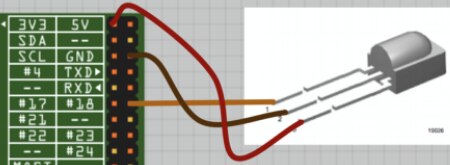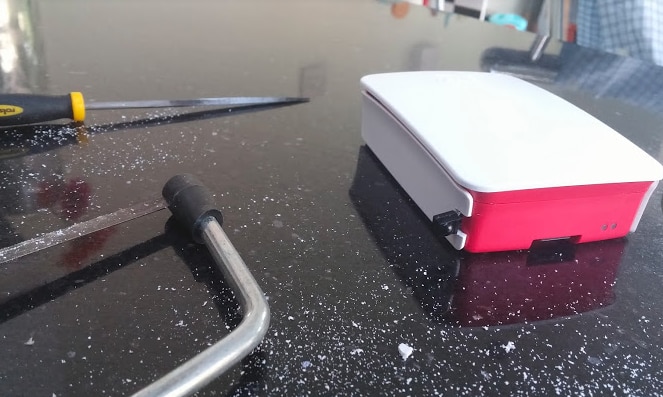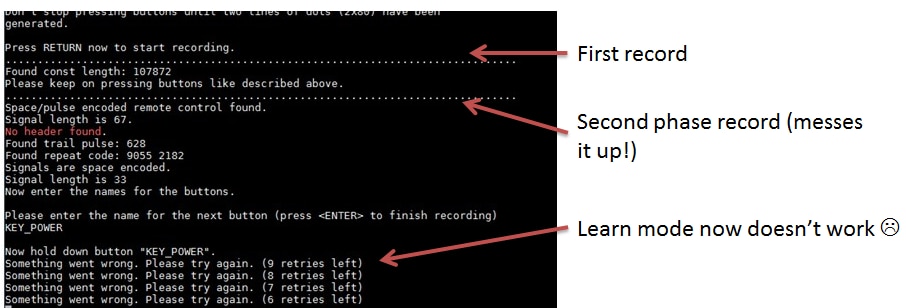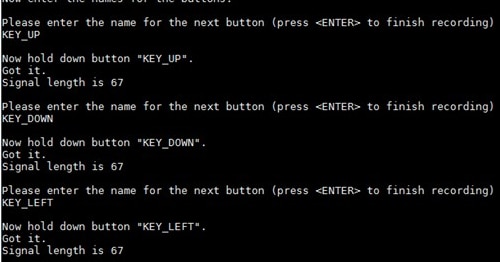In my last post I took you through how I created a small portable media centre that I can easily take on holiday to hook up to the hotel TV.
To reduce the amount space it took up, I used a cheap USB keypad which could be used to control the media center. It worked really well & having something hard-wired meant I didn’t have to worry about a Bluetooth-paired device needing re-pairing.
However, what I then realised was it would be good to be able to use a spare remote control instead. I was using the OpenElec distribution and looked through their documentation for how to do this, but only found references to version 3 of the software (it’s on version 7) and how to get LIRC working with it. There were plenty of blog posts on hooking up IR support, but a lot of them were written 2-3 years ago, and the software has moved on somewhat.
Hardware Setup
What I did first was buy a suitable IR receiver. I chose the Vishay TSOP4838 (which costs less than £1) because of the voltage range (2.5-5.5v) and receiver frequency (38KHz). If you look at the datasheet for the product, you’ll see which pins should get wired up to the Pi;

Simply wire pin 1 to GPIO 18, pin 2 to GND, and pin 3 to a 3.3v power pin, e.g.

By using some short F-F jumper wires and a small cut in the side of the case, I was able to position the reciever neatly(ish) on the side.. it’s still easily removable, but you could integrate it into the case a bit more seamlessly than this ;)



Software Setup
Before this project I was using OpenElec, but had limited success getting the IR support working properly. I switched to OSMC which I’d read had better IR support through the main UI. I think I was actually on the right track with OpenElec, but I realised later that the old vintage Xbox remote I was trying to use wasn’t 100% working.
If you’re going to use a remote control that’s officially recognised, then you can jump this part about learning IR remote control codes.
Learning IR remote commands
The remote I found in the loft was an old DVD player remote which (unsurprisingly) wasn’t in the list of pre-recognised remotes in the OSMC installation. I needed to get the Pi to learn the IR pulses being sent out by the remote and map them to the Kodi functions.
1. First off, you need to telnet to the Pi. Username: osmc, Password: osmc.
2. Next you need to stop the LIRC service which is being locked/used by Kodi
sudo systemctl stop lircd_helper@lirc0
3. Now you can run the IR learn mode.. this will record what it finds to the config file you specify;
irrecord -d /dev/lirc0 /home/osmc/lircd.conf
4. Follow the on-screen instructions which will recognise your remote.
One observation I had was that this only worked properly if I stopped after the first prompt to press lots of keys on the remote.. if I completed the second stage, the key mapping didn’t work, e.g.

If I ignored the second phase & let it abort, the learn process worked

When it’s working, you’ll be able to enter the Kodi function (like KEY_UP, KEY_DOWN, etc) & map it to a key press on your remote;

Once you’ve mapped all the functions you want, we then need to move back to OSMC and tell it to use that config file we’ve just written.
OSMC Settings
In OSMC you need to do the following;
1. Disable the CEC service (via System Settings > Input > Peripherals > CEC Adapter), which seems to be needed for LIRC to work.
2. Now go into OSMC settings and pick the Raspberry Pi icon
3. Go into Hardware Support and enabled LIRC GPIO Support. You shouldn’t need to change anything if you connected the sensor to GPIO 18.
4. Now go back and select the Remote Control option.
5. Ignore the list of pre-installed remotes and select Browse;
6. Navigate to the folder where LIRC wrote your config file;
7. Confirm the change & reboot the box;
That should be it.. your remote should be able to control everything in Kodi.













 Over the past 3 years I’ve had the
Over the past 3 years I’ve had the 
 In Feburary 2012, Blackberry updated the OS for their 7″ Playbook tablet to v2.0. This introduced compatailbity with Android-based applications whereby developers can simply repackage, code sign, and submit their Android apps into BlackBerry App World. It also means you can take any Android app (that hasn’t gone through this process) and sideload the app yourself.
In Feburary 2012, Blackberry updated the OS for their 7″ Playbook tablet to v2.0. This introduced compatailbity with Android-based applications whereby developers can simply repackage, code sign, and submit their Android apps into BlackBerry App World. It also means you can take any Android app (that hasn’t gone through this process) and sideload the app yourself. The Belkin 54G wireless access point I’ve been using for a few years has been suffering since we extended the house.. there’s just not enough range on it, and it tends to temporarily lock up if it’s hammered a lot.
The Belkin 54G wireless access point I’ve been using for a few years has been suffering since we extended the house.. there’s just not enough range on it, and it tends to temporarily lock up if it’s hammered a lot. In the last few weeks the price of the Blackberry Playbook has plummeted further, to £169 in the UK from retailers such as PC World. At that price it deserved some research into what it offers & whether it’s worth a look. The tablet itself is solidly built, with a decent amount of processing power & good multi-tasking abilities. There’s an app store that offers a fair number of apps, including the obligatory Angry Birds, Plants vs Zombies, and useful stuff like free VNC clients.
In the last few weeks the price of the Blackberry Playbook has plummeted further, to £169 in the UK from retailers such as PC World. At that price it deserved some research into what it offers & whether it’s worth a look. The tablet itself is solidly built, with a decent amount of processing power & good multi-tasking abilities. There’s an app store that offers a fair number of apps, including the obligatory Angry Birds, Plants vs Zombies, and useful stuff like free VNC clients. Due to a clash with a toddler and my Harmony 555 all-in-one remote I bought a
Due to a clash with a toddler and my Harmony 555 all-in-one remote I bought a
You must be logged in to post a comment.